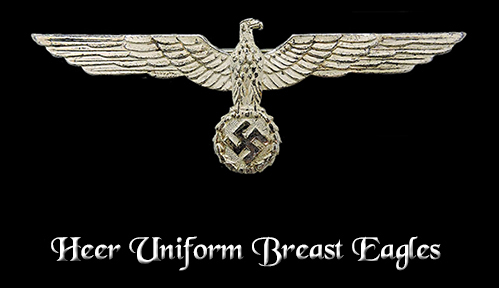

On the 17th February 1934, an order (Chef der Heeresleitung No. 440/34 WehrA. Allg.IV AZ.64) was issued stating that a new emblem was being introduced in the form of an eagle and that the newly introduced emblem would be known as the “national emblem”.
The order also stated that the national emblem was to be worn on all uniform, which included: steel helmets, peaked caps, tunics and field blouses by no later than the 1st May 1934.
Over the following months, new orders were issued covering various units and the method of wear on uniform for officers and NCO/EM. Some of the orders included; the national eagle to be worn on all field caps, the sports uniform and the black panzer wrap tunic.
During the war breast eagles were manufactured in a variety of slightly different manufacturing techniques and colorations. The early standard issue EM/NCO's M36 breast eagles were in white threads and were to be abolished in 1939 to be replaced with a less visible, grey, M39 breast eagle but the changeover was never fully completed. The early produced M36 and M39 breast eagles were mounted on a dark blue/green base while later production models were on a field-grey base. Both the M36 and the M39 breast eagles were intended for wear on the combat field blouse.
Generally, officer ranks used hand or machine embroidered breast eagles (metal eagles on the summer uniform) while NCO/EM ranks used machine embroidered or machine woven breast eagles.
The last production of breast eagle were of the printed type, on plain cloth, this being due to the lack of essential materials.
There were many variations of the breast eagle, in both metal and cloth. The examples shown below are but a small number produced during the time.
Metal breast eagles for Officer white summer uniform
Officers holding ranks of Generalmajor to Generalfeldmarschall wore gold coloured breast eagles, as opposed to the silver versions worn by all other officer ranks
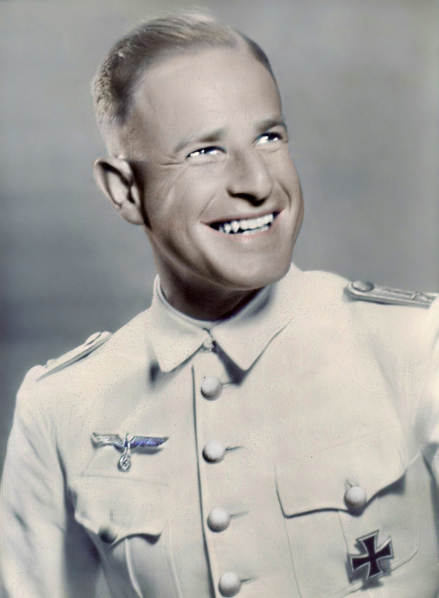
Heer white summer uniform with with silver metal eagle, in wear
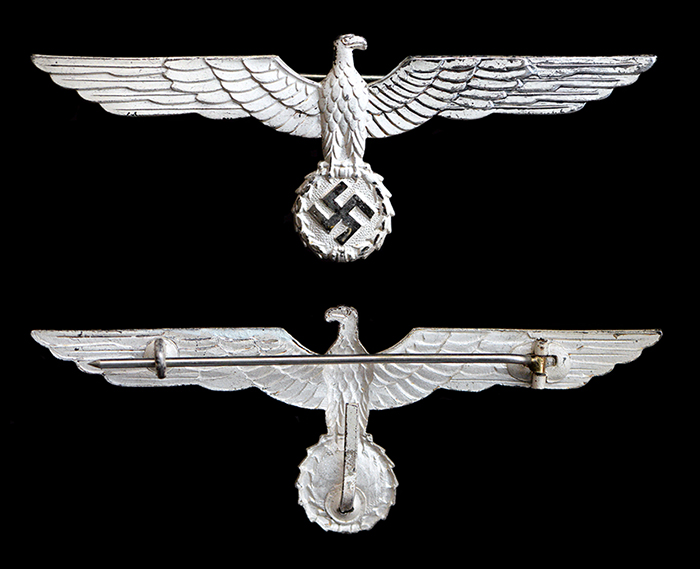
An example of an early die-stamped breast eagle for the heer white summer uniform
(attributed to the maker, Wilhelm Deumer - Lüdenscheid)

Generalfeldmarschall wilhelm Keitel seen wearing a gilt breast eagle
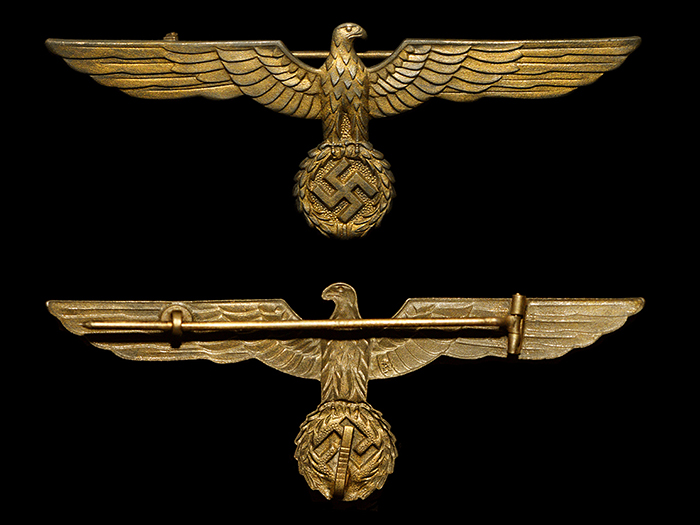
Gilt breast eagle
maker: F.W Assmann - Lüdenscheid
![]()
Cloth breast eagles for General Officers, Officers, Non-Commissioned Officers and Enlisted men
General Officers
(Generalmajor to Generalfeldmarschall)
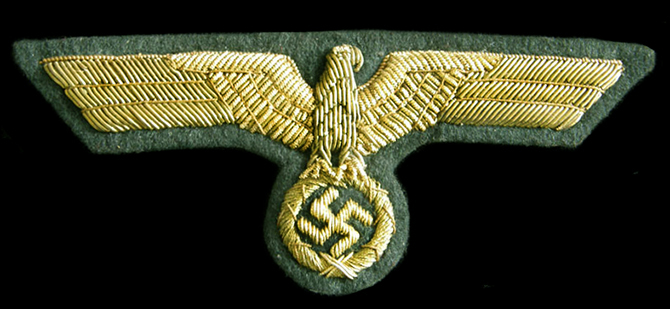
Standard hand-embroidered gold bullion breast eagle for General Officers - Generalmajor to Generalfeldmarschall
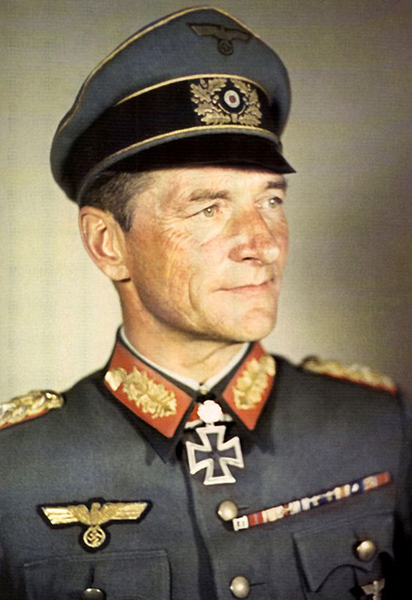
General der Infanterie Erich Abraham seen wearing the standard hand-embroidered gold bullion breast eagle for General Officers
Officers
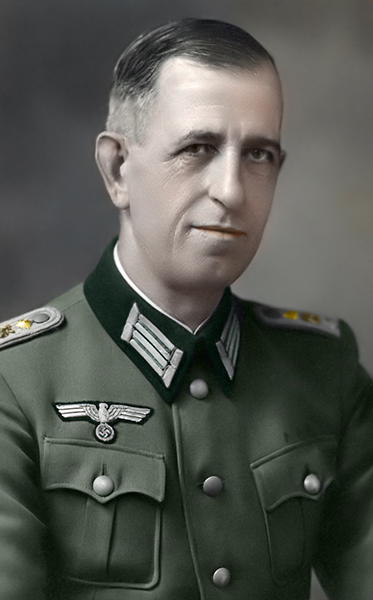
Officer with hand-embroidered silver bullion breast eagle in wear
The following are but a small sample of hand-embroidered silver bullion breast eagles (which, by their very nature, were all individual) produced during the time.
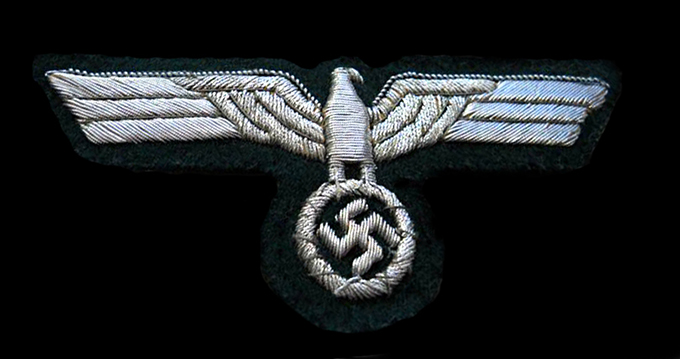
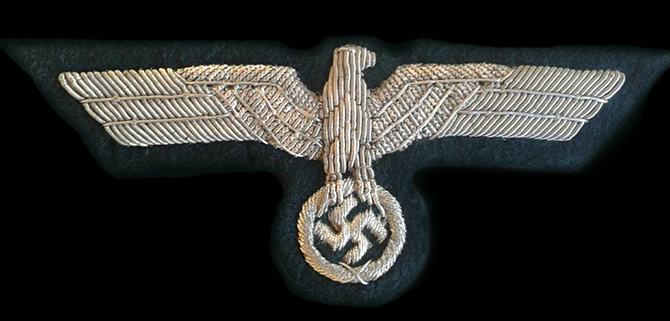
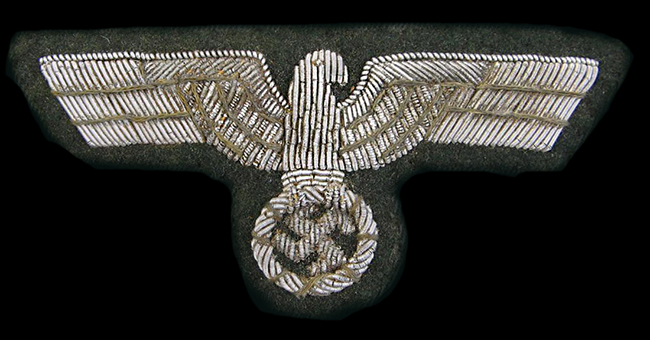
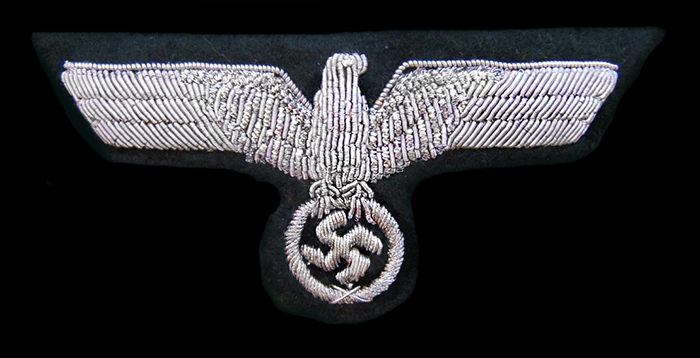


NCO/EM

Officer hand-embroidered breast eagles were also authorized for wear on enlisted dress tunics that were privately purchesed
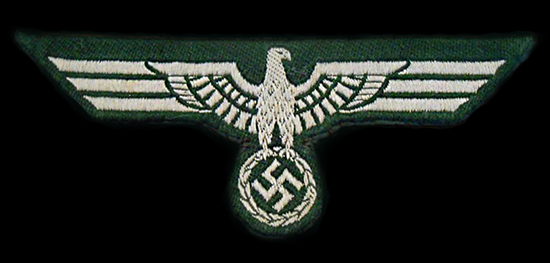
1st pattern breast eagle

1st pattern breast eagle - tropical
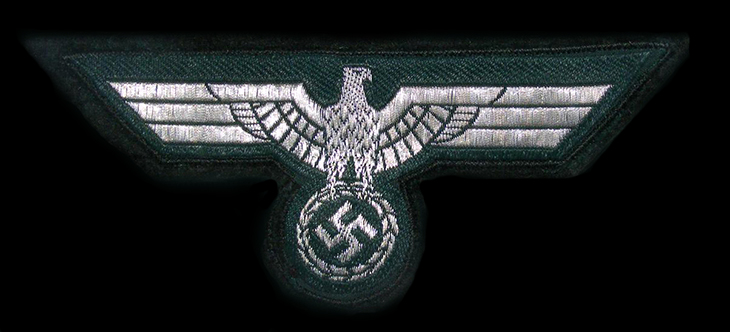
Officer/NCO 2nd pattern flat wire breast eagle

Officer/NCO 2nd pattern flat wire breast eagle in wear
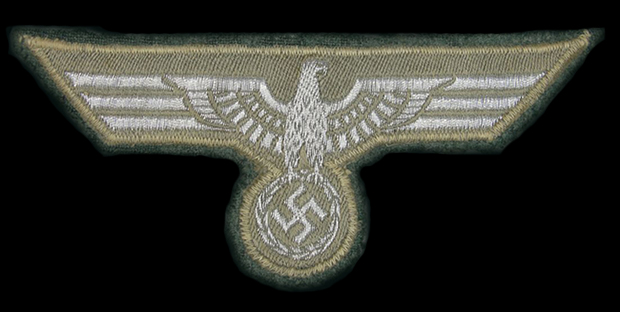
Officer/NCO 2nd pattern flat wire breast eagle - tropical
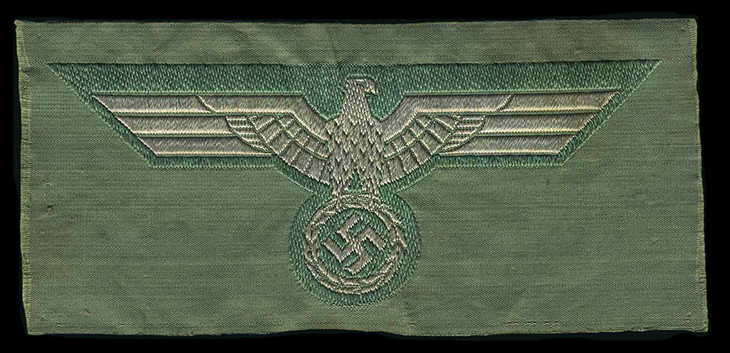
Bevo heer breast eagle - unissued

Bevo heer breast eagles in wear
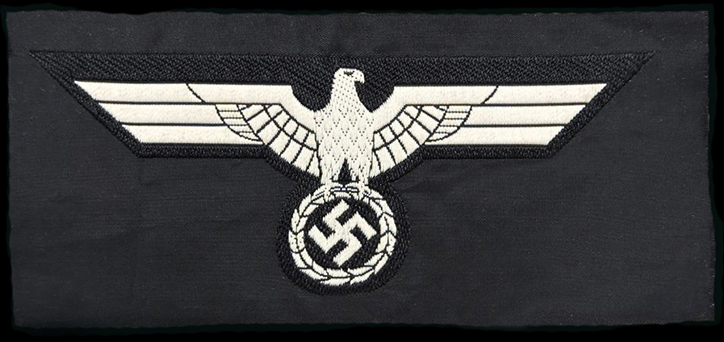
Bevo heer panzer breast eagle - unissued

Heer panzer breast eagle in wear
The final production
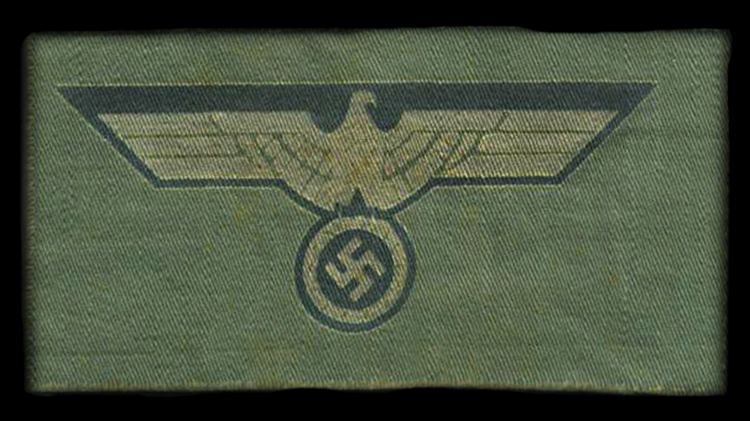
Printed breast eagle - M45
![]()
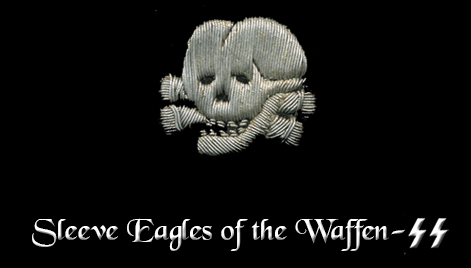
(SS-Ärmelhoheitsabzeichen)
On the 20th July 1934, shortly after the 30th June 1934 purge of the SA on the "Night of the Long Knives", the SS was rewarded by Hitler by being granted the status of an independent organization under direct control of the NSDAP. The SS sleeve eagle was officially introduced in May 1936. Shortly after its official introduction the eagle underwent minor modifications resulting in the pattern that was worn for the duration of the war. These eagles were originally issued in a hand embroidered version for Officer’s ranks and a machine embroidered version for EM/NCO’s until a machine woven version was introduced in 1939. In late 1944 a final pattern SS sleeve eagle in printed form was introduced for EM/NCO’s on the newly introduced M44 field blouse.
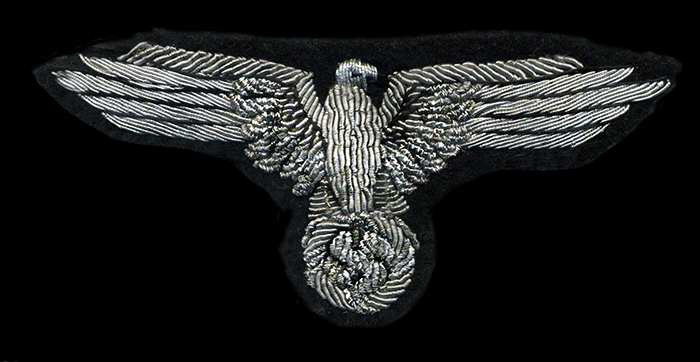
Waffen-SS officer's hand embroidered bullion sleeve eagle
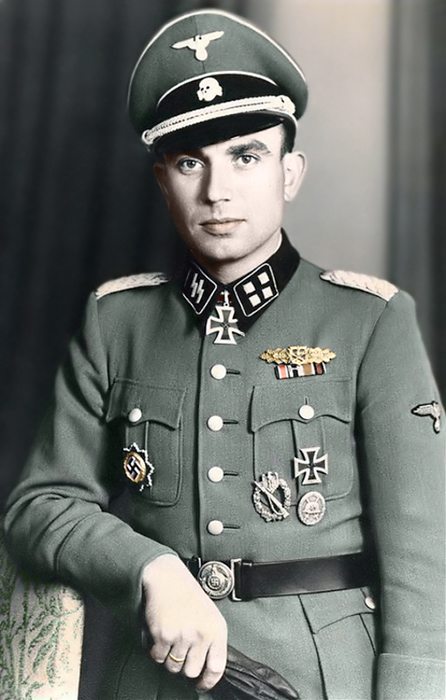
officer's Waffen-SS hand embroidered bullion sleeve eagle in wear
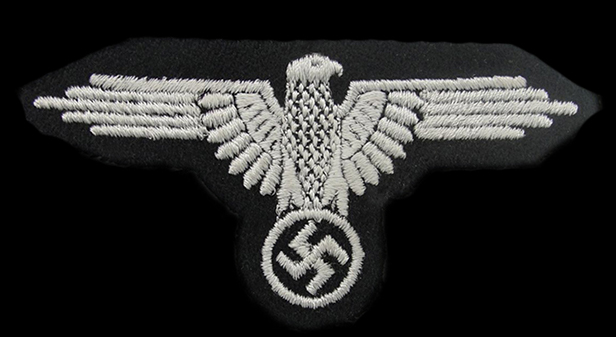
An example of a machine embroidered wool sleeve eagle
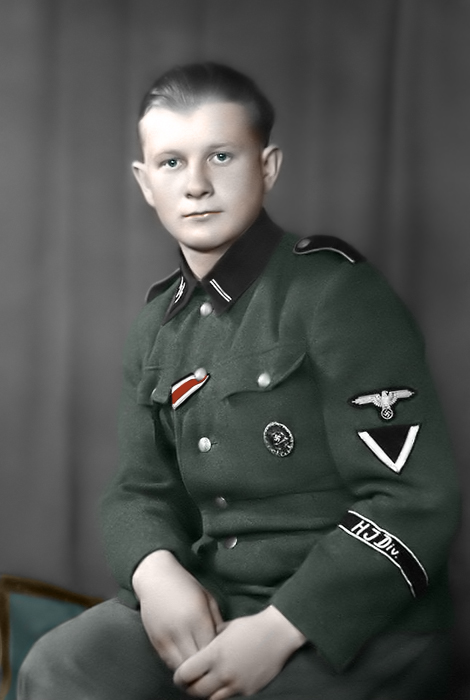
Waffen-SS machine embroidered wool sleeve eagle in wear
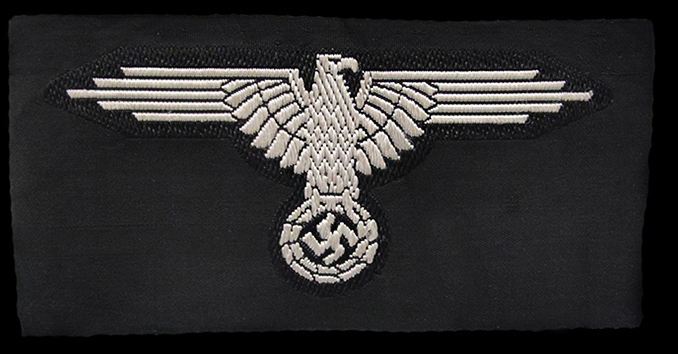
An example of an unissued bevo Waffen-SS sleeve eagle

An example of a bevo Waffen-SS tropical sleeve eagle -unissued
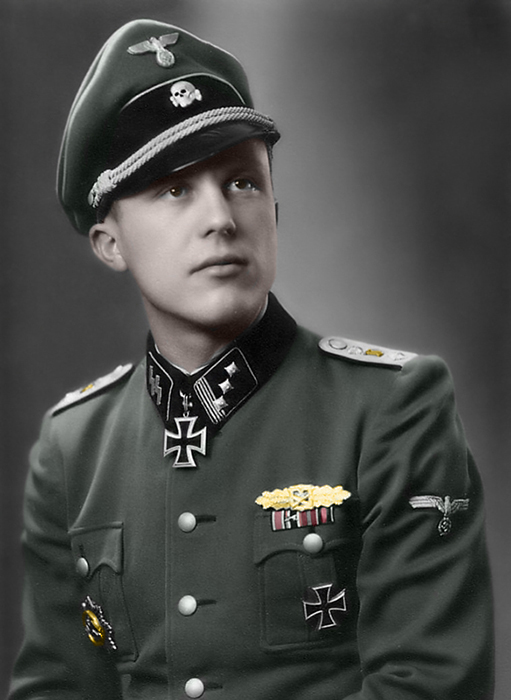
Photographic evidence shows the wide use of political/army eagles, as opposed to the SS eagle, on SS uniforms, as can be seen on the portrait of SS-Hauptsturmführer Helmuth Schreiber - seen above wearing political eagles on both cap and arm.
Helmuth Schreiber
Dob: 25 March 1917
Place: Giessen, Germany
Dod: 6 December 2008 (aged 91)
Years of service: 1939-45
Rank
Sturmbannführer
Unit
2nd SS Panzer Division Das Reich
Awards
Knight's Cross of the Iron Cross
Iron Cross 1st Class
Iron Cross 2nd Class
Wound Badge
Close Combat Clasp in Gold
Eastern Front Medal
German Cross in Gold
Anschluss Medal
Sudetenland Medal
Wound Badge
Helmuth Schreiber (25 March 1917 – 6 December 2008) was a Sturmbannführer (Major), in the Waffen-SS during World War II who was awarded the Knight's Cross of the Iron Cross, which was awarded to recognize extreme battlefield bravery or successful military leadership by Nazi Germany during World War II. He was also one of only 631 members of the German Armed forces to be awarded the Close Combat Clasp in Gold
He joined the Waffen SS and as part of the SS Standarte Deutschland participated in the Anschluss of Austria and the occupation of the Sudetenland in 1938. He was awarded the Iron Cross 1st and 2nd class in December 1941. He served as the Company commander of the 10th Company, 3rd SS Panzer Grenadier Regiment Deutschland, 2nd SS Panzer Grenadier Division Das Reich. He was also awarded the Knight's Cross in July 1943, while in command of the 10th Company. He was promoted to Sturmbannführer and assumed command of the Deutschland Regiment when he was awarded the Close Combat Clasp in Gold, in May 1944